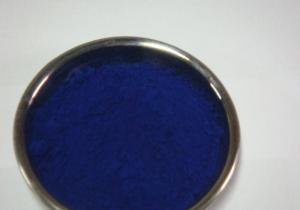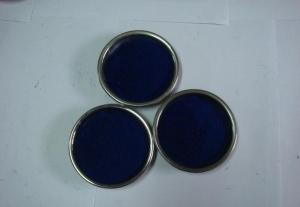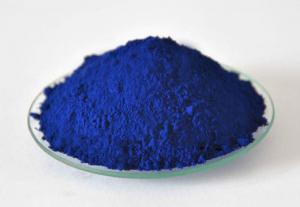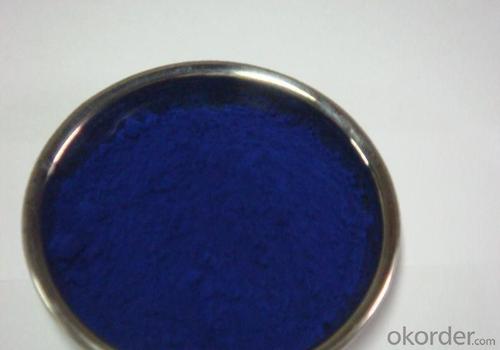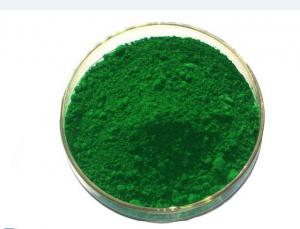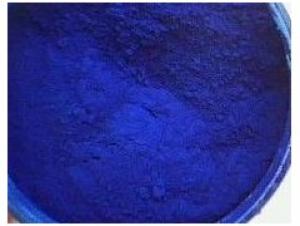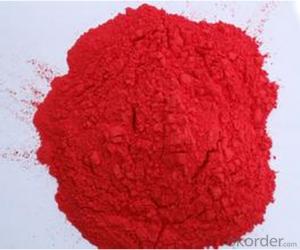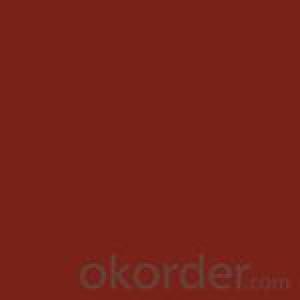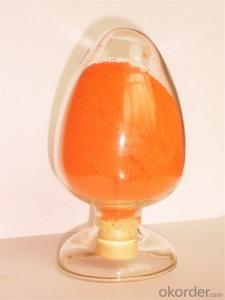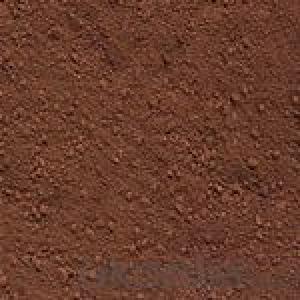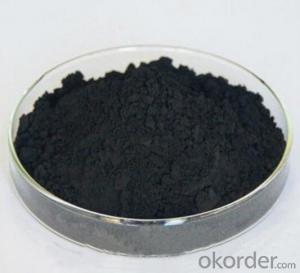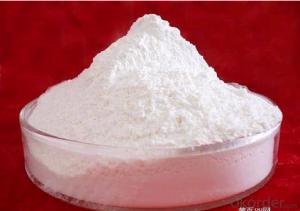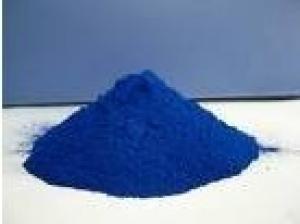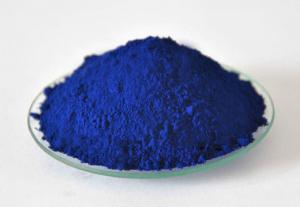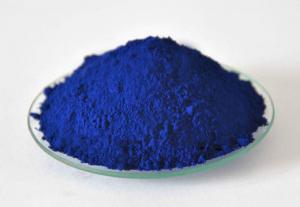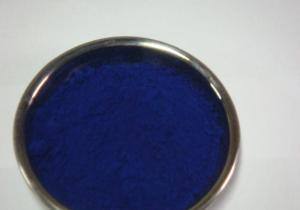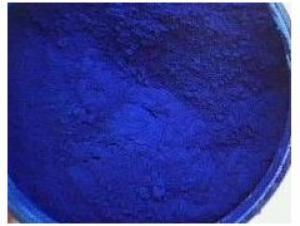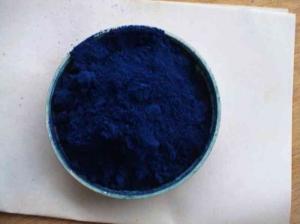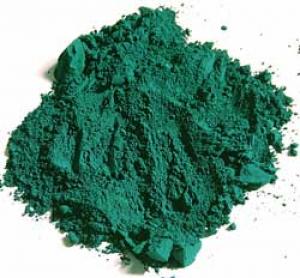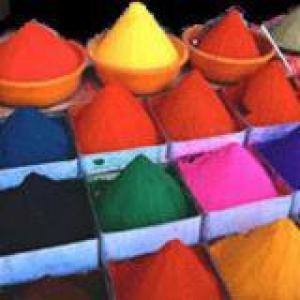Phthalocyanin Blue 15:0/15:1/15:2/15:3/15:4
- Loading Port:
- Qingdao Port
- Payment Terms:
- TT or LC
- Min Order Qty:
- 1 Metric Ton m.t.
- Supply Capability:
- 7,500MT/Year m.t./month
OKorder Service Pledge
OKorder Financial Service
You Might Also Like
Product Details Of Phthalocyanine Blue :
Appearance: Blue powder - Micro
Solubility: insoluble in water, ethanol and hydrocarbon solvents, in concentrated sulfuric acid is olive
colored solution was diluted blue precipitate.
Hue or shade: light red light blue
Relative Density :1.50-1 .79
Accumulation Density / (lb / gal) :12.5-14 .9
Melting_point / °C: 600 (decomposition)
Average particle size / μm: 0.08
Particle shape: rod (square)
Specific surface area / (m2 / g) :30-90
pH value / (10% slurry) :6.5-8 .0
Oil Absorption / (g/100g) :32-70
Packing Of Phthalocyanine Blue :
25 kg /kraft bag , or PP bag , or as your requirements .
Suggest Using Of Phthalocyanine Blue :
widely used in PE, Industrial paint, decorative paint, coil coating and textile printing.
Suggested for PVC, water based inks, OEM paint and powder coating.
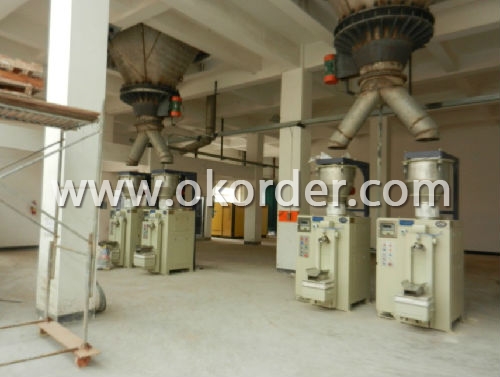
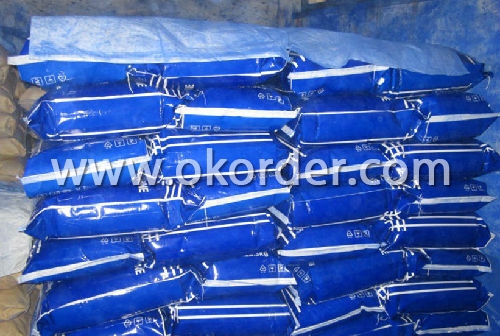
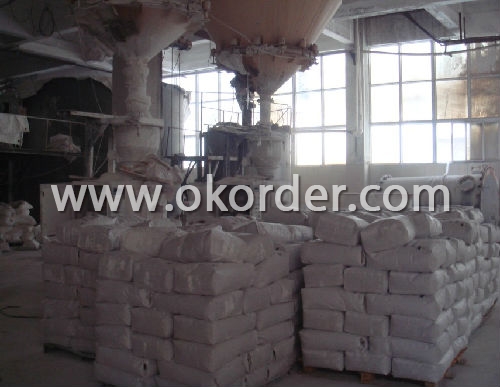
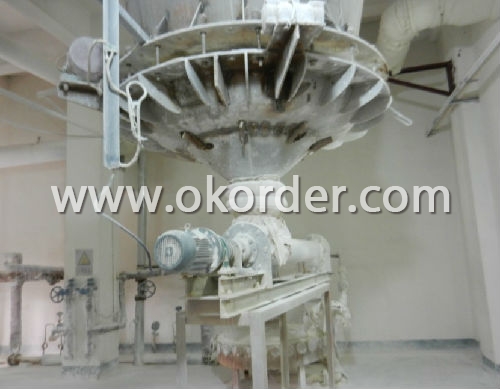
- Q: Why do algae contain pigments other than just chlorophyll?
- To use other wavelengths to perform photosynthesis.
- Q: What are MAC eyeshadow pigments? Are they just like regular eyeshadow.. are they used the same way? Has anyone tried them and liked them?
- NEVER TRIED THEM HEARD GOOD THANGS THO
- Q: Can you take any powder, grind it finely, and mix linseed oil into it to make oil paints to make paint? Or do paint pigments have to have special characteristics? Thanks!!
- Pigments are specific minerals found in rocks. Then they are ground down and mixed with the binders for oil, acrylic, and watercolor paints. You can take art classes that teach you how to make your own paints. I have a cousin who hikes to find her own pigments and makes all the colors she paint with. If you'd like something less labor-intensive, you can buy the pigments you want from lots of art stores these days. They can be added to pre-existing colors to enhance them, or you can start from scratch to formulate your own colors. The bottles i've seen are around 8 ounces, and cost about $50. You will likely find books in the library and articles online that will help you learn to make your own pigments.
- Q: What does the word pigment mean?
- ? PIGMENT (noun) The noun PIGMENT has 1 sense: 1. dry coloring matter (especially a powder to be mixed with a liquid to produce paint etc) Familiarity information: PIGMENT used as a noun is very rare. ? PIGMENT (verb) The verb PIGMENT has 2 senses: 1. acquire pigment; become colored or imbued 2. color or dye with a pigment Familiarity information: PIGMENT used as a verb is rare.
- Q: I hear about it cause my Friend is albino and she was born with no pigments in her hair,skin or eyes
- a pigment is a naturally produced substance in humans and nature in general, that reflects light that is perceived by our eyes as colour -a person without pigment would show totally white hair, and pale pink skin and eyes (the pink is from the blood vessels) -we have it to protect us from the sun --> naturally dark or tanned people have lots, rarely get burned or skin cancer; fair-skinned people were designed for the northern areas with less sunlight, burn easily
- Q: a question on my photosynthesis test review...=_=
- it is in maximum cases the nitrogen. All fertilizers have a N-P-ok quantity ( like 10-10-10) the place each quantity corresponds to the according to cent of each nutrient: nitrogen (N), phosphorous (P), and potassium (ok). The nitrogen in Miracle advance is in maximum cases urea compounds, like safeguard pronounced.
- Q: what is pigment?
- a pigment has some kinds like biological pigment and arsenic pigment. i dont know much about the arsenic pigment. i would just tell something about the biological pigment. in biology, pigment is any material resulting in color of plants or animals cells. many biological structures like eyes,fur,hair and skin contains pigments like melanin in specialized cells called chromatophores.
- Q: I'm onto black-berry.. I wonder what else is available in 98362.
- Pigments from the past came from rocks, minerals, plants, and other natural materials. Those things are all still available. You can take classes at some universities that teach how to make your own paints, or dry pigments. For native American pigments, you have to research which tribe used which colors. To be totally authentic you could visit the tribe of your choice and see if you can learn from them. Sticking to your own zip code will not net you much, usually.
- Q: why do plants need more than one pigment for light absorption?
- Pigments are molecules with an array of covalent bonds capable of absorbing a photon of light that has only a certain wavelength. The absorbed wavelength is only a fraction of the continuous range of wavelengths reaching the reaction center of a chloroplast. Each pigment species absorbs a different portion of the spectrum. So most photosynthesis works in combinations of pigments to absorb a across the visible spectrum and somewhat beyond. Some pigments (accessory photosynthesis carotenoid pigments) absorb useful wavelengths to pass the energy to chlorophyll A while the Xanthophyll Cycle pigments absorb potentially harmful high energy wavelengths for dissipation. Accessory pigments provide a range of spectra collection that allowed plants to adapt successfully to environments of differing light conditions. Pigments provide coloration to signal flower or fruit maturity to pollination partners or seed dispersal partners. Anthocyanins and carotenoids perform these communication functions. Phytochrome is a pigment that absorbs one wavelength only to toggle to another shape capable of absorbing at a different wavelength. Algae and plants both use this system to inform them of the time of year so they can synchronize with the best season in their habitat for reproduction efforts to succeed. Plants use phytochrome to regulate the photoperiod of flowering or seed germination.
Send your message to us
Phthalocyanin Blue 15:0/15:1/15:2/15:3/15:4
- Loading Port:
- Qingdao Port
- Payment Terms:
- TT or LC
- Min Order Qty:
- 1 Metric Ton m.t.
- Supply Capability:
- 7,500MT/Year m.t./month
OKorder Service Pledge
OKorder Financial Service
Similar products
Hot products
Hot Searches
Related keywords
